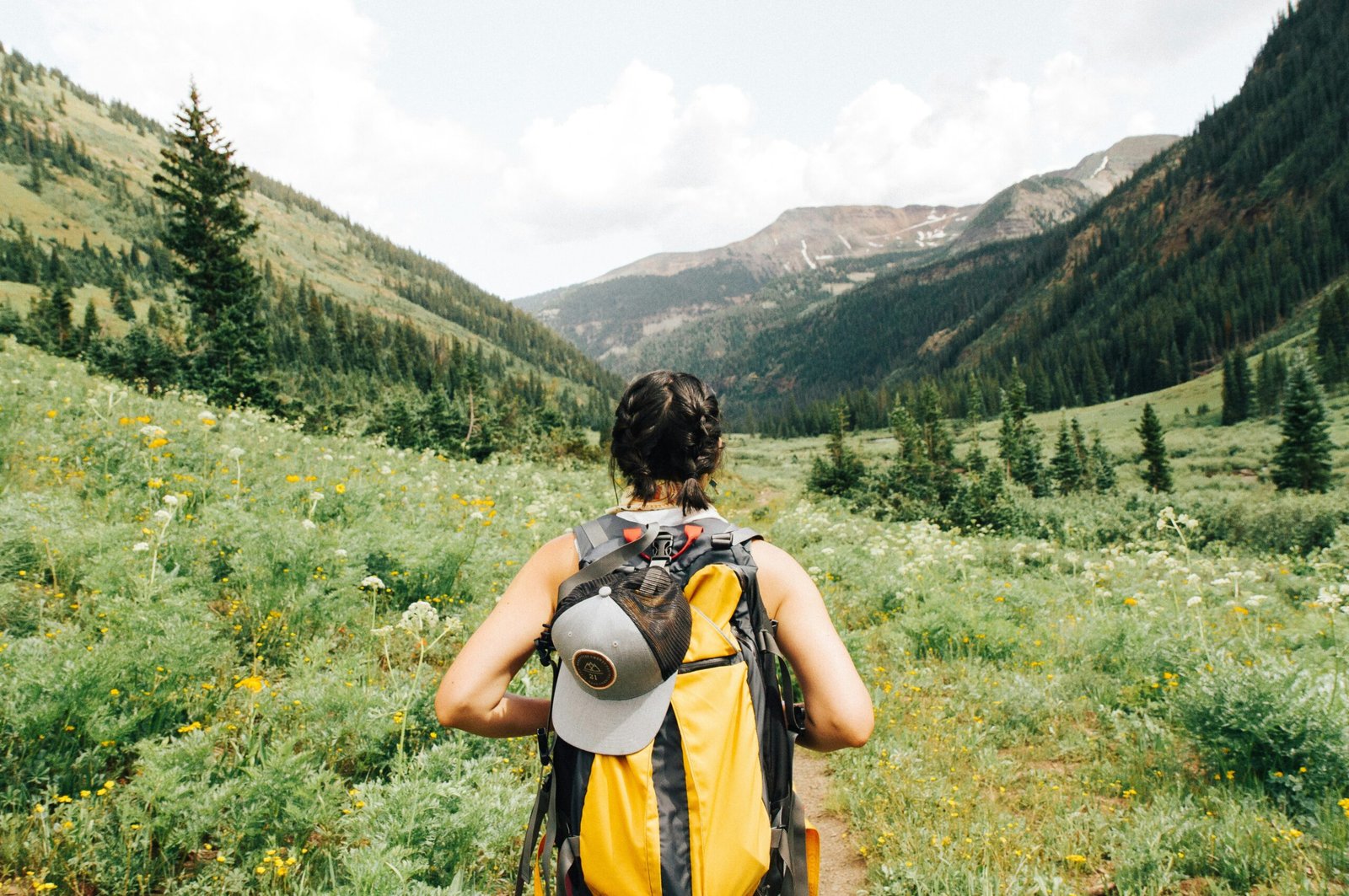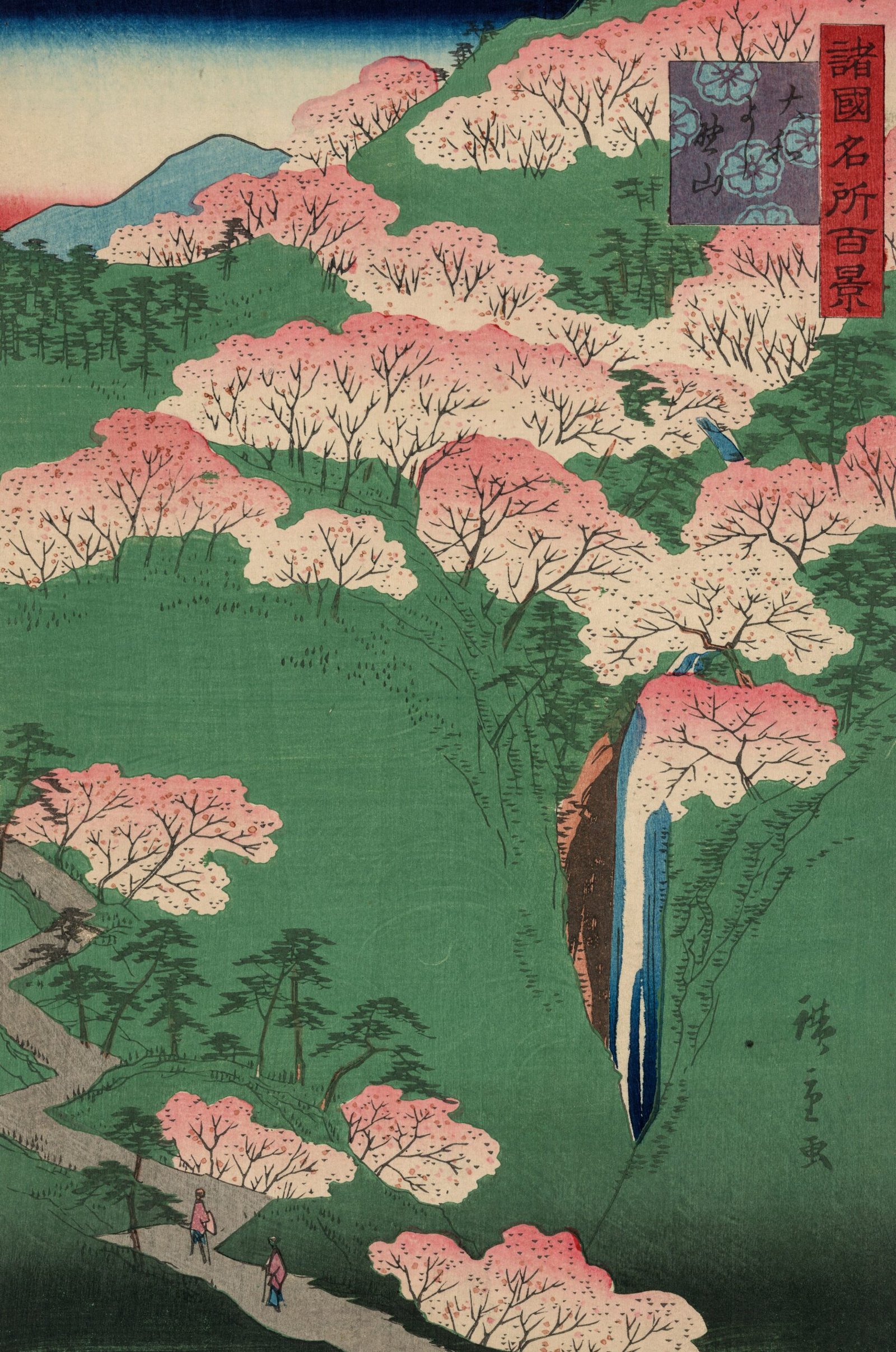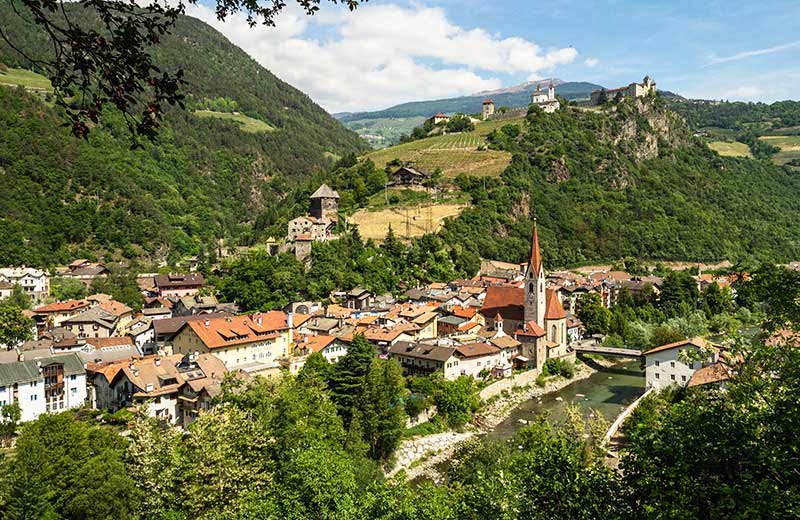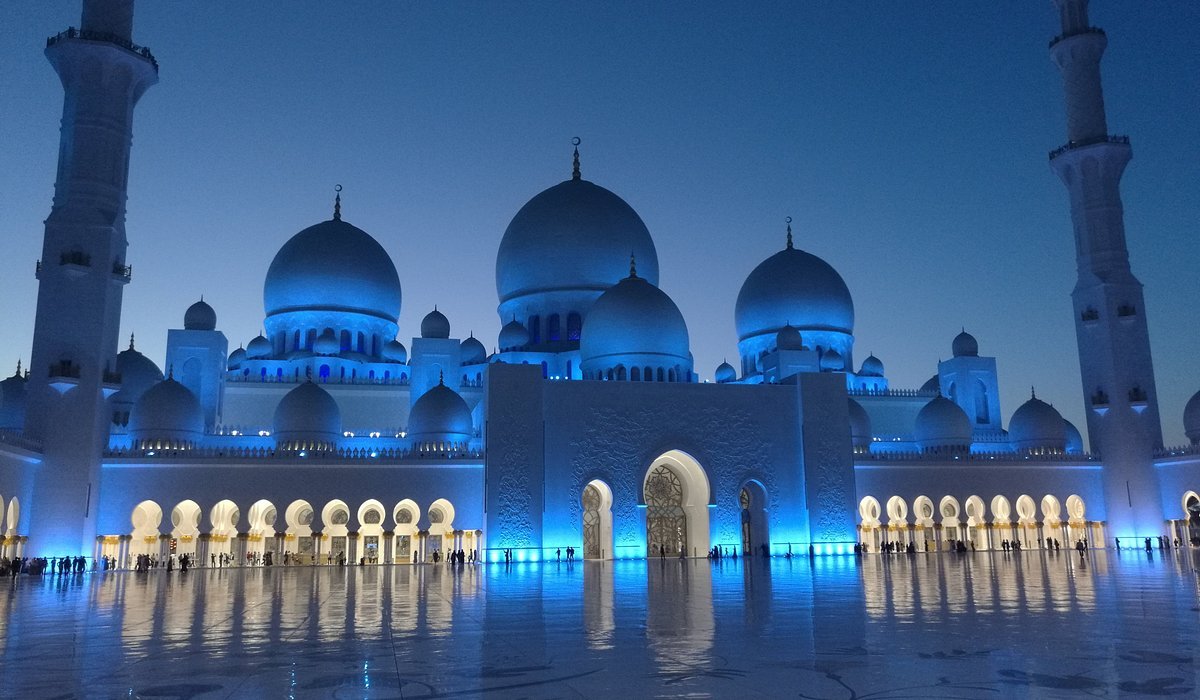Introduction to Meteora
Meteora, a UNESCO World Heritage site located in central Greece, is renowned for its striking sandstone rock formations that rise dramatically from the landscape. These enormous pillars, which soar up to 400 meters, were formed through geological processes over millions of years, creating a breathtaking natural tableau that captivates visitors. The name Meteora translates to “suspended in air,” which aptly describes the stunning monasteries perched atop these towering cliffs.
The history of the monasteries of Meteora dates back to the 14th century, when monks sought solace in these remote locations, favoring the seclusion that the rocky outcrops provided. Initially, monks from Mount Athos established monastic communities here, seeking a spiritual refuge far from worldly distractions. Over time, sixteen monasteries were founded, of which six remain active today, serving as places of worship and cultural preservation. Each monastery stands as a testament to the resilience and determination of the monks, who built these architectural marvels almost vertically on steep rocks.
The natural beauty surrounding Meteora is equally captivating, with lush valleys, flowing rivers, and a vibrant ecosystem home to diverse flora and fauna. Hiking in this region offers an unparalleled opportunity to immerse oneself in the breathtaking landscapes while experiencing the area’s rich cultural heritage. Trails meander through lush forests, ancient pathways, and offer unparalleled views of the monasteries perched high above. A visit to Meteora is not just about the hike; it is an experience that intertwines natural wonder with historical significance, making it an ideal destination for outdoor enthusiasts and history buffs alike.
The Historical Significance of the Monasteries
The monasteries of Meteora, perched atop towering rock formations in central Greece, hold immense historical significance, rooted in their establishment during the 14th century. These remarkable structures were founded by monks who sought both solitude and a deeper connection to spirituality. The harsh, isolated environment provided them with an opportunity for reflection and devotion, leading to the creation of a unique monastic community. Over the centuries, this community flourished and became a vital center for Byzantine art and literature.
Initially, the monasteries were erected as a response to the growing turmoil and external pressures, such as invasions and the decline of Byzantium. The first of the six active monasteries, the Great Meteoron, was established in 1344 by Athanasios, a monk who sought refuge from the chaos of the time. Following its example, the others were founded, each contributing to the preservation of Orthodox Christianity and its cultural heritage. The remaining monasteries—Varlaam, Rousanou, Trinity, St. Nicholas Anapausas, and the Holy Trinity—each possess unique features, showcasing intricate frescoes, sacred relics, and ancient manuscripts.
These monasteries also played a crucial role in providing spiritual guidance and education, becoming vital centers for scholarship during the Byzantine period. Many monks dedicated their lives to copying texts, thus ensuring the survival of classical philosophy and theological works. Intriguingly, the architecture of these structures reflects both their religious purpose and the challenges faced by their builders, utilizing local materials and ingenious engineering techniques that have stood the test of time.
The historical narrative of Meteora is not only about the preservation of art and spirituality but also about the resilience of a community committed to fostering enlightenment amidst adversity. The monasteries continue to attract visitors, serving as a reminder of their enduring legacy. Each visit to these majestic sites offers an opportunity to connect with the profound spiritual and historical journey that shaped their existence.
Preparing for Your Hiking Adventure
Embarking on a hiking adventure in the breathtaking landscapes of Meteora requires careful preparation to ensure a rewarding experience. Timing is a critical aspect to consider, with late spring (April to June) and early autumn (September to October) often regarded as the ideal seasons. During these months, the weather is pleasantly mild, providing optimal conditions for trekking while avoiding the sweltering summer heat and the tourist crowds.
When preparing your packing list, prioritize functional clothing to accommodate the varied terrain. Lightweight, moisture-wicking fabrics that offer sun protection are recommended, paired with a durable, breathable jacket in case of sudden changes in weather. Sturdy, comfortable hiking footwear is essential; choose well-fitted hiking boots that provide ankle support and traction on rocky paths. Remember to pack extra layers, especially if you plan to hike at higher elevations where temperatures can drop.
Additionally, consider bringing essential hiking gear such as a sturdy backpack to carry water, snacks, and any personal items. A well-stocked first-aid kit, a map or GPS device, and a reliable water purification system will enhance safety on the trails. It is also advisable to stay hydrated and carry sufficient water to prevent dehydration during the hike.
Pre-hike fitness is another important factor. Engage in regular aerobic exercises, strength training, and flexibility workouts in the weeks leading up to your hiking adventure to build stamina and reduce the risk of injury. Familiarize yourself with local customs and regulations to ensure that your hike is respectful to both the environment and the cultural significance of the monasteries. By adhering to marked trails and maintaining a respectful demeanor, hikers can contribute to the preservation of this unique heritage while enjoying its beauty.
Popular Hiking Trails Around Meteora
The region of Meteora offers a diverse selection of hiking trails, each with its unique charm and level of difficulty. Among the most popular routes is the Kalambaka to Varlaam Monastery trail, which spans approximately 3.5 kilometers. This hike presents a moderate challenge, making it suitable for both seasoned hikers and newcomers alike. As you ascend, you’ll encounter breathtaking panoramic views of the impressive rock formations and the surrounding valley. The trail also provides opportunities to explore the rich flora and fauna of the area, enhancing your experience with nature.
Another noteworthy hike is the route from Grand Meteoron to the Holy Trinity Monastery. This path is a bit more demanding, covering around 4 kilometers and featuring steep inclines. Hikers can appreciate the stunning views over the Pindus mountain range and the tranquil landscape below. Along the way, visitors can marvel at the architectural beauty of the monasteries, with the Holy Trinity Monastery perched dramatically atop a cliff, a sight that evokes a sense of serenity and wonder.
The hike from Varlaam Monastery to Rousanou Monastery, covering about 2 kilometers, is also highly recommended. This route is characterized by its scenic beauty, leading hikers through lush vegetation and offering splendid views of the monasteries as well as the surrounding rock formations. The trail is deemed moderate in difficulty and is perfect for those who wish to enjoy both natural and historical elements of the region.
For those seeking a more strenuous adventure, the trail from the village of Kastraki to the north of Meteora allows for extended exploration. This 7-kilometer trek is physically demanding but rewards hikers with secluded viewpoints and encounters with the rugged landscape. Each of these trails showcases Meteora’s extraordinary combination of natural beauty and cultural heritage, making them essential for anyone wishing to experience this extraordinary destination.
What to Expect During Your Hike
Hiking through the breathtaking trails of Meteora presents an unforgettable experience characterized by stunning landscapes and unique geological features. Nestled in central Greece, this site is renowned for its towering rock formations and ancient monasteries, providing a picturesque backdrop for hiking enthusiasts. The trails vary in difficulty, catering to both novice and experienced hikers. Some paths are well-marked and accessible, while others weave through steep inclines and rocky terrain, ensuring an adventurous experience.
As hikers traverse the area, they will encounter a diverse array of flora and fauna indigenous to the region. The paths are often lined with vibrant wildflowers, herbs, and endemic plants, contributing to the rich biodiversity of the ecosystem. Birdwatchers may be delighted by sightings of various species, including the elusive griffon vulture that nests in the surrounding cliffs. Observing the natural beauty that flourishes in this environment adds to the overall charm of the hiking experience.
It is important to consider safety measures while hiking in Meteora. Many trails feature steep sections, requiring proper footwear and cautious navigation. Hikers should be aware of their personal limits and take frequent breaks to enjoy the scenery. Additionally, weather conditions can change rapidly in this mountainous region, potentially impacting visibility and trail conditions. Carrying essential hiking gear, including a map, adequate water supply, and weather-appropriate clothing, is crucial for a safe and enjoyable journey.
In summary, hikers at Meteora can look forward to an enriching experience. The combination of stunning vistas, unique rock formations, and rich biodiversity creates an opportunity for exploration and connection with nature, making it a worthwhile endeavor for outdoor enthusiasts. Proper preparation and awareness of safety considerations will only enhance the memories made during this awe-inspiring hike.
Exploring the Monasteries: Must-See Highlights
The monasteries of Meteora, renowned for their breathtaking architecture and stunning landscapes, offer visitors a rich tapestry of culture, spirituality, and history. Among the six active monasteries, each distinct in its character, there are several must-see highlights that encapsulate the essence of this extraordinary site. The Great Meteoron, the largest of the monasteries, features remarkable frescoes by the acclaimed painter, Theophanes of Crete, whose works depict biblical scenes and saints that are pivotal to Orthodox Christianity. The monastery’s museum also houses impressive artifacts, including ancient manuscripts and ecclesiastical vestments.
Next is Varlaam Monastery, famous for its exquisite wood-carved altar screen, a true testament to the artistic craftsmanship of the time. The notable icon of the Virgin Mary, housed here, is particularly cherished by visitors. The monastery’s elevated position provides stunning panoramic views of the surrounding valley, encouraging visitors to pause and appreciate the serene environment.
Rousanou Monastery, smaller yet equally enchanting, is adorned with a rich array of frescoes that date back to the 16th century. Its peaceful atmosphere makes it an ideal spot for reflection and contemplation. Travelers should also not miss the chance to explore the intricate details of the chapel and the botanical garden, which showcases plants traditionally used by the monks for medicinal purposes.
For a glimpse into monastic life, a visit to St. Nicholas Anapausas Monastery reveals intricate frescoes and a well-preserved chapel that transports visitors back in time. Meanwhile, the Holy Trinity Monastery, perched atop an isolated peak, boasts an amazing collection of religious art that captives anyone who steps inside. Lastly, the smaller but charming Georgeouvica Monastery is often less crowded, allowing for a more intimate experience with its serene courtyard and lovely vistas.
When visiting these sacred spaces, it is essential to respect the traditions and rules established by the monastic communities. Proper attire—covering shoulders and knees—is mandatory, ensuring that visitors honor the spiritual significance of these remarkable sites. Each monastery offers a unique perspective on monastic life, making them essential highlights for anyone exploring the spiritual landscape of Meteora.
Local Cuisine and Culture: Where to Eat and Stay
After an invigorating day spent exploring the breathtaking trails of Meteora, indulging in the region’s local cuisine becomes a delightful priority for every hiker. The area is renowned for its traditional tavernas, which offer an authentic taste of Greek culinary heritage. Visitors can savor classic dishes such as moussaka, a layered casserole made with eggplant, minced meat, and béchamel sauce, or souvlaki, which features skewered and grilled meat, often served with pita and fresh vegetables. Fresh seafood, hearty legumes, and a variety of flavorful appetizers known as meze are also popular choices. To enhance your dining experience, consider pairing your meal with local wines or enjoying a glass of ouzo, a traditional anise-flavored aperitif.
As for accommodations, Meteora provides a range of options that cater to the needs of hikers and tourists alike. Those seeking comfort and convenience can choose from several hotels situated near the trailheads, ensuring quick access to the stunning natural landscape. Many of these establishments offer amenities such as guided tours or packed lunches for hiking adventures. For a more immersive experience, consider booking a stay in one of the charming guesthouses that reflect local aesthetics and hospitality. These smaller accommodations often provide personalized service and may even include traditional meals prepared with locally sourced ingredients.
Exploring the monasteries of Meteora not only presents an opportunity for breathtaking hikes but also invites visitors to connect with Greek culture through its cuisine and hospitality. By making thoughtful choices about where to eat and stay, hikers can augment their experience, feeling refreshed and enriched after their outdoor excursions. This plunge into the local food scene enhances the overall journey, creating cherished memories intertwined with the fantastic landscapes of Meteora.
Tips for Responsible Hiking in Meteora
As one of the most breathtaking destinations in Greece, the Meteora region is not only renowned for its stunning rock formations but also for its significant cultural heritage. When hiking in Meteora, it is imperative to adopt responsible practices that ensure the preservation of both the environment and the centuries-old monasteries that define the landscape. Adhering to the Leave No Trace principles is a foundational guideline. Hikers should always carry out what they bring in, including trash or food wrappers, to maintain the natural beauty of the area.
Respecting the local culture is crucial while exploring this unique site. The monasteries are still active places of worship, and visitors should dress appropriately and speak quietly to uphold the serene atmosphere. Engaging with local community members in a respectful manner enhances the hiking experience. Taking the time to learn about their traditions and way of life fosters a deeper appreciation of the region.
Additionally, hikers ought to stick to marked trails. Wandering off the paths can lead to erosion and damage fragile ecosystems unique to Meteora. It is equally important to be mindful of wildlife and plants that inhabit the area, ensuring that their habitats remain undisturbed. Remember, the cultural heritage within these monasteries is invaluable; therefore, maintaining their historical integrity is essential. Avoid touching or climbing on the structures and keep noise levels low to not disturb those seeking tranquility.
Another important aspect of responsible hiking is staying informed about weather conditions and any park regulations in place. Understanding the terrain and being prepared for sudden changes can significantly improve the hiking experience and safeguard against potential hazards. By following these guidelines, hikers can not only enjoy the majestic views of Meteora but also contribute to its preservation for future generations.
Conclusion: Embrace the Journey
Hiking in Meteora is not merely a physical activity; it is a profound journey that intertwines adventure with spirituality. The striking formations of towering cliffs and the unique architecture of the monasteries provide a breathtaking backdrop for those who wish to explore this UNESCO World Heritage site. As one navigates the winding trails, it becomes apparent that each step into this sacred landscape is steeped in history and culture, offering an enriching experience that transcends the physical realm.
Embracing the journey entails appreciating the serenity of the environment and the legacy of the monastic community that has thrived in this region for centuries. The breathtaking views from various hiking paths serve as reminders of nature’s grandeur and the resilience of the human spirit. Wandering through the trails not only connects individuals with the stunning topography of Meteora but also invites introspection and reflection, creating a unique blend of adventure and personal discovery.
Moreover, the opportunity to immerse oneself in the historical and spiritual significance of the monasteries enhances the overall experience. Visitors often find that quiet moments spent contemplating the beauty around them or witnessing the ancient practices preserved in these sacred sites can elicit profound transformations in perspective. The connection forged between nature, heritage, and self elevates the hiking expedition beyond mere exploration; it becomes a journey toward inner peace and enlightenment.
In summary, the hiking trails of Meteora offer a rare chance to engage deeply with a remarkable landscape that is both awe-inspiring and historically significant. As hikers embark on this adventure, they are encouraged to embrace every moment, for within these hills and valleys lies not just a trail, but a pathway towards understanding and spiritual fulfilment.







